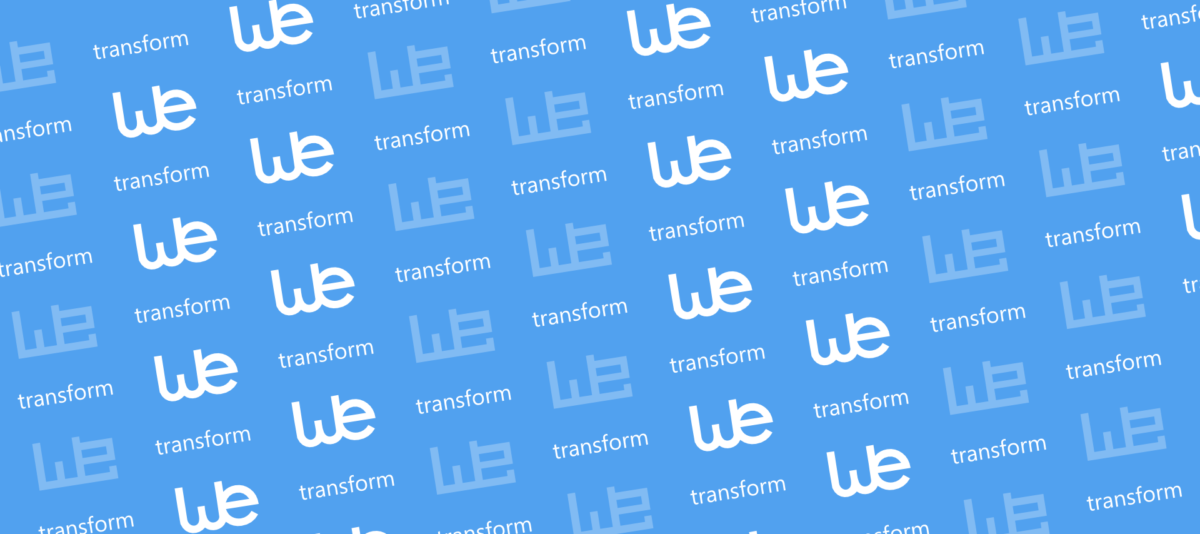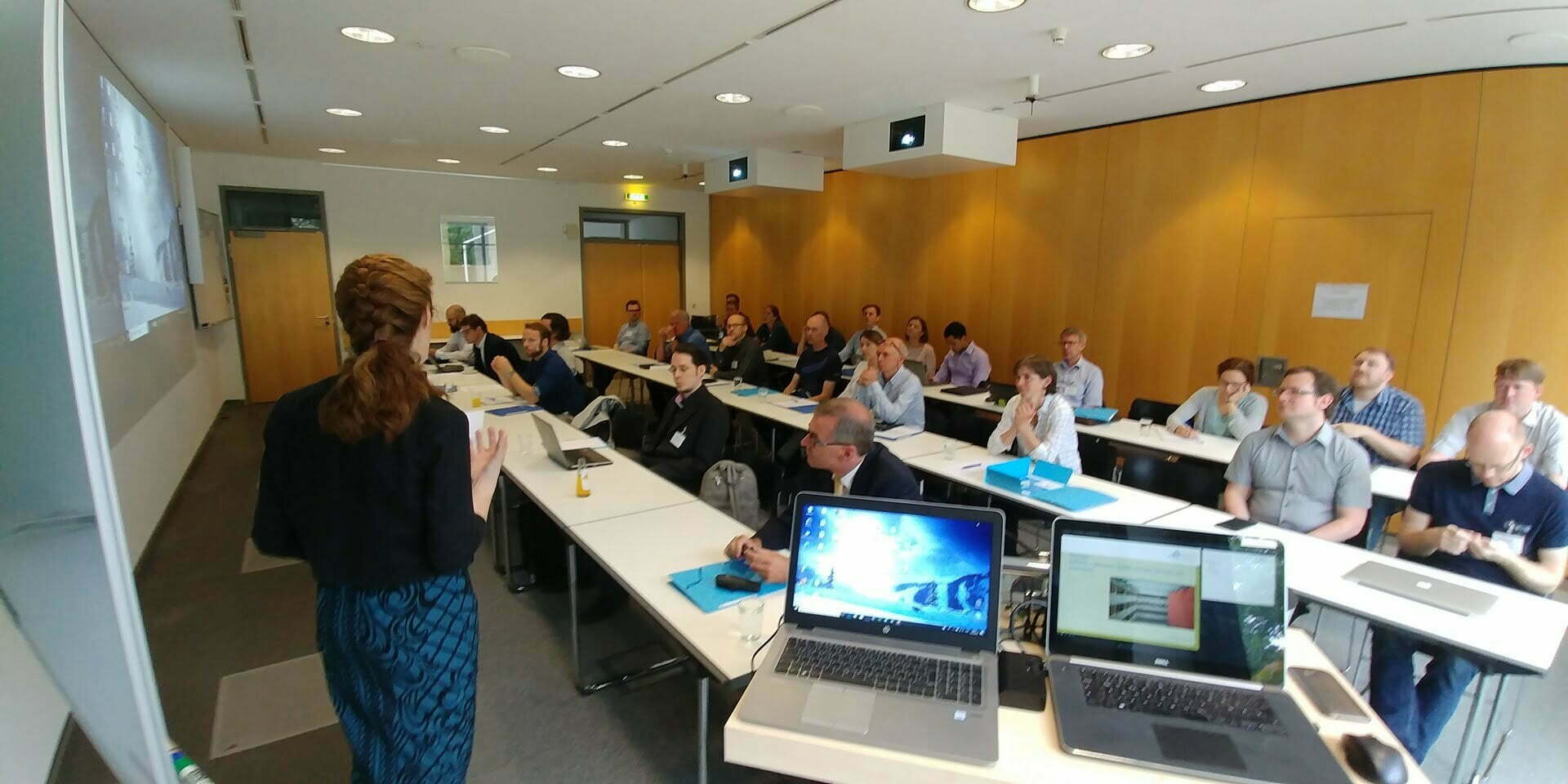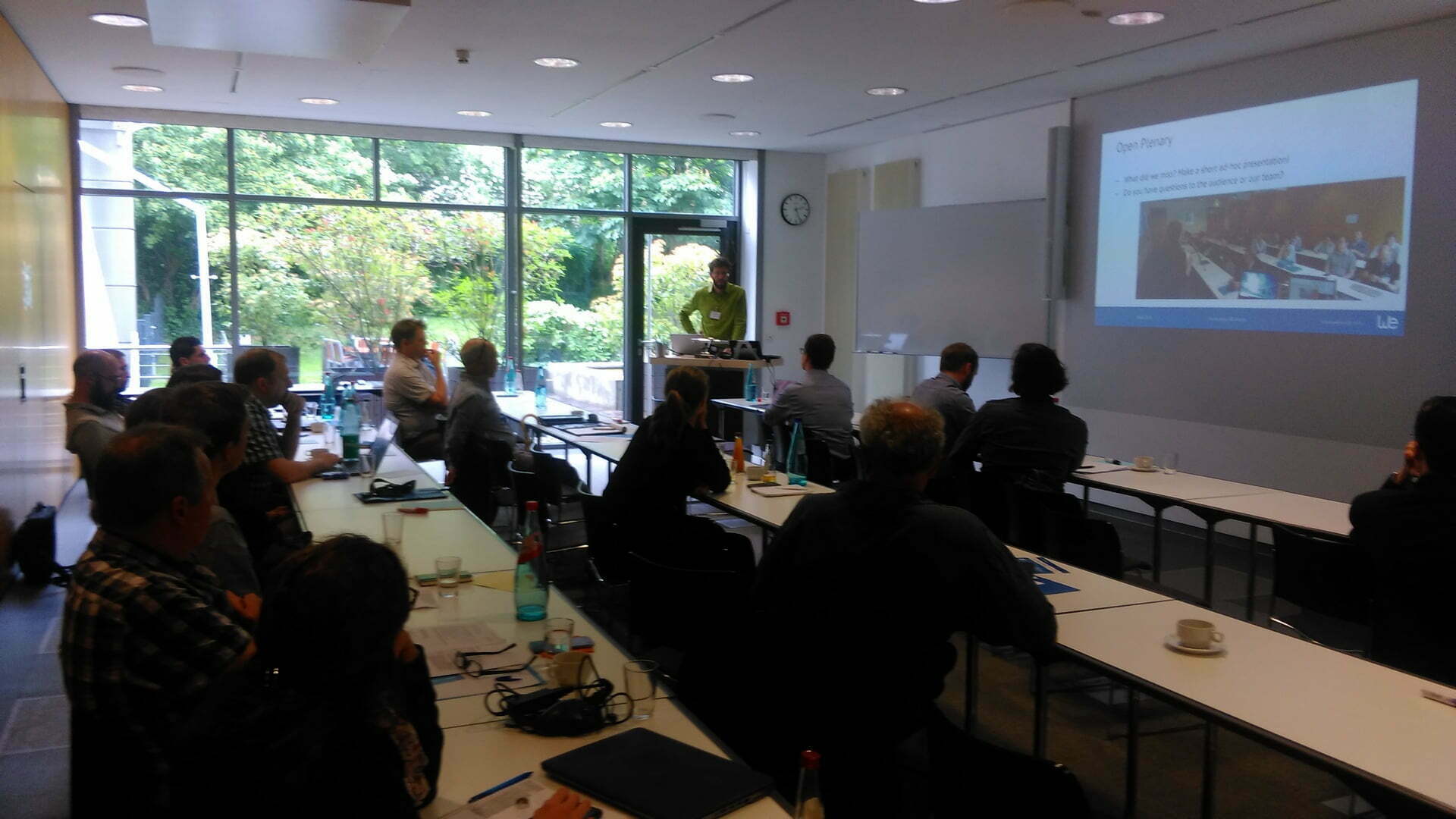
So, how was it? Our summary of the INSPIRE and Beyond workshops, sessions, and networking
INSPIRE is a digital infrastructure, but it is also a community. This community meets on-line, and also face to face at events such as the annual INSPIRE conference. Events really do bring people together to share challenges, ideas and solutions.
As part of the INSPIRE community, we wanted to establish a new opportunity to do exactly that. Thus, we organized the first INSPIRE and Beyond (IAB) conference . It took place from 23rd – 24th May, 2018 in Darmstadt, Germany, at one of the world’s leading applied research organisations, Fraunhofer IGD. With about 35 registrants – all of whom came to the event – it was still an intimate group.
In terms of the format, we decided to combine a presentations track with a workshop track based on feedback from early registrants. The IAB 2018 included keynote sessions and talks on topics related to the INSPIRE Directive, its implementation, challenges and outlook. In the workshop track, it offered training focused on tools and technologies that can help geodata providers to efficiently implement the directive.

For starters
In the opening keynotes, we wanted the attendees to get a clear understanding of where we currently stand in terms of INSPIRE implementation, and what the main open challenges are. For this purpose, we invited two keynote speakers.
The first keynote presentation “INSPIRE – current status and what can we expect” was delivered by Prof. Dr. Robert Seuss from the Frankfurt University of Applied Sciences. Prof. Seuss pointed out crucial challenges in the INSPIRE implementation, and gave an outlook for future expectations. One of interesting takeaways is the expectation that INSPIRE will be fueled by mega trends like Digitalization and Open Data which help a lot in understanding the possible outcomes and the added value of a successfully implemented directive.
Nicolas Hagemann from the German SDI Coordination Office addressed the question of the current INSPIRE and SDI status in Germany in the second key note presentation “INSPIRE at the finish line?”. He showed the latest statistics for INSPIRE progress from respective EU reports. His key takeaways were that INSPIRE implementation is approaching the finish line in Germany, but that there is also a lot of work ahead to complete the provision of interoperable data sets in Annex II and Annex III, as well as to align INSPIRE to national projects in Germany and to other European initiatives.
Innovation is crucial
In the innovation session, we started off with a presentation on the next generation of “Cloud-based INSPIRE services”. Michel Krämer (Fraunhofer IGD) focused on how to implement future spatial data services based on the WFS 3.0 specification in a native cloud architecture. The presentation gave insights into how GeoRocket, an Open Source framework developed by the Fraunhofer IGD GEO Group, can address challenges such as large data volumes, a wide variety of use cases and low operating costs. Wetransform currently works with Fraunhofer on this topic and thus wants to contribute to innovations that make INSPIRE data really useful.

Being practical and technical
At IAB, we offered four workshops, which addressed a wide range of topics from data models in INSPIRE, data transformation, data publishing, as well as an advanced workshop on Groovy scripting in hale studio.
In the Data Modelling workshop, Thorsten first started with the “why” of data models, and then introduced processes to manage them and tools to design them. The focus was clearly on the methodology of designing a data model, but he also showed innovative tools for data-driven modelling and for profiling of data models.
In the Data Transformation workshop, Simon focused on advanced topics in data transformation in hale studio, such as the new capabilities for merging alignments.
The Data Publishing workshop addressed questions of creating INSPIRE compliant View and Download services, including metadata. This workshop also provided clarification on some common questions related to compliance.
The Groovy Scripting workshop presented the hale studio option to define custom functions using Groovy Scripting. In this workshop, Johanna Ott and Simon Templer shared how to develop these, along with a lot of recipes for solving common issues in transformation.
And what is beyond INSPIRE?
INSPIRE is not supposed to be self-serving only. One of the key questions driving the community nuts right now is what business processes and values chains will build on the infrastructure, and currently, such processes are still rare. For this reason, we included two sessions on Business and Applications.
“Smart Cities” are another hyped concept where actual applications are often not that clear. However, both smart cities and INSPIRE build on data. INSPIRE mostly contributes more static, reference data, whereas smart cities provide a dynamic were a central point of the Application session with presentations showing use cases and examples on how geodata can improve smart cities management, or how geodata can drive better citizens participation in their cities.
While Veneta Ivanova, from the Fraunhofer OGD Institute focused on citizen’s participation in her presentation, Szymon Ciupa, from the Smart Cities Initiative, explained current challenges and practices in smart cities management.
Kate Lyndegaard then switched gears and showed how INSPIRE and another EU legislation, the famed GDPR, intersect. She explained the scope of both legislations, and explained how to tackle GDPR in terms of INSPIRE using examples of personal data stored in the metadata. INSPIRE and GDPR: Are they interoperable? was probably the hottest presentation in terms of the discussion it generated, not only in the session, but also during the breaks. This is no wonder considering that the GDPR was to come into force in just two days after the event, and that there is massive uncertainty in how it will play out for all involved.
Anida Jusufovic concluded the business session with an in-depth presentation about optimizing procurement processes. In Getting what you need: Optimizing Procurement for INSPIRE solutions she walked the event attendees through the tendering and procurement jungle and showed some steps that can increase the efficiency in INSPIRE procurement projects. Based on a structured decision tree, institutions can see and decide which procurement model works best for them and in that way increase the outcome quality and reduce risks.
A Strong Network of Partners
The morning of the second IAB day was dedicated to wetransform partners and their integrated solutions and services.
In “Can you stand your success?” Ikka Rinne from Spatineo presented tools for testing service availability, performance and capacity that can effectively be used in INSPIRE projects. In his engaging presentation you can find out more about the Spatineo Monitor, a plug-in for INSPIRE GIS, or about other innovative tools coming from Spatineo.
Stefania Morrone, from Epsilon Italia, engaged the audience with interesting use cases in her session “INSPIRE as an effective tool for e-reporting: the EEA ‘EU Registry on industrial emissions’” Stefania presented the long term goals of an efficient INSPIRE implementation by clearly showing that the Directive is serving a self-purpose, but can offer more when planned accordingly.
Let us conclude
After two very engaging days, Thorsten Reitz concluded the first IAB event. His Closing Plenary started off by asking “Is INSPIRE leading the next platform revolution?”
By using analogies of AirBnB, Uber, LinkedIn and other platform providers, the closing session offered the opportunity to think about INSPIRE as an open Geospatial Data Platform that would allow authoritative geospatial data to be utilized to its full potential.
Thorsten also explained some of the mid-term and long-term product strategies of wetransform, giving a sneak preview into the new touch-first Web Transformation tools that will become part of haleconnect.com in Q3 2018, and in explaining the road to different levels of autonomous data transformation.

Feedback – for IAB and for the INSPIRE community at large
The feedback round was the final highlight of the event: all attendees had a chance to provide direct feedback. We asked four questions:
- What would you like to see more of?
- What would you like to see less of?
- Which topics should this event address next year?
- Which topics should the INSPIRE community urgently address?
The attendees didn’t have any ideas what to skip, but there was plenty of feedback what to add to the event and which topics we could address:
- More presentations on INSPIRE use cases in production
- More presentations on how to use INSPIRE extensions to work with INSPIRE in practice
- More hands-on workshops
- More detailed presentations by users, e.g. on how they used hale studio to create transformation projects
- More presentations by wetransform that summarize the challenges and solutions observed across all customers
- More opportunities to “Bring your own Project / Data”
One somewhat critical point was the dual-language format of the conference (parts in German, parts in English). We will critically review our approach there and consider changes for 2019.
These were the main points with respect to the community at large:
- Clarify the role of extensions in INSPIRE
- Clearly explain which feature type is used for which use cases
- Move forward on maintenance of the current technical guidance, ideally with an annual release cycle
- Incorporate alternative or additional encodings such as GeoJSON and interfaces such as WFS 3.0 quickly so that current Annex II / III work can benefit from these developments
- Clarify what the alternatives to INSPIRE implementation would be, and how INSPIRE relates to these alternatives
- Specifically motivate sectors such as Utility companies why they should implement INSPIRE
- Better position INSPIRE outside the community and create significant connections to other policy areas, ranging from CAP to GDPR
We would like to thank everyone who attended the first INSPIRE and Beyond event and contributed to its success. This story will continue: We plan to organize another INSPIRE and Beyond next year and provide some more use cases and present interesting INSPIRE implementation projects.


